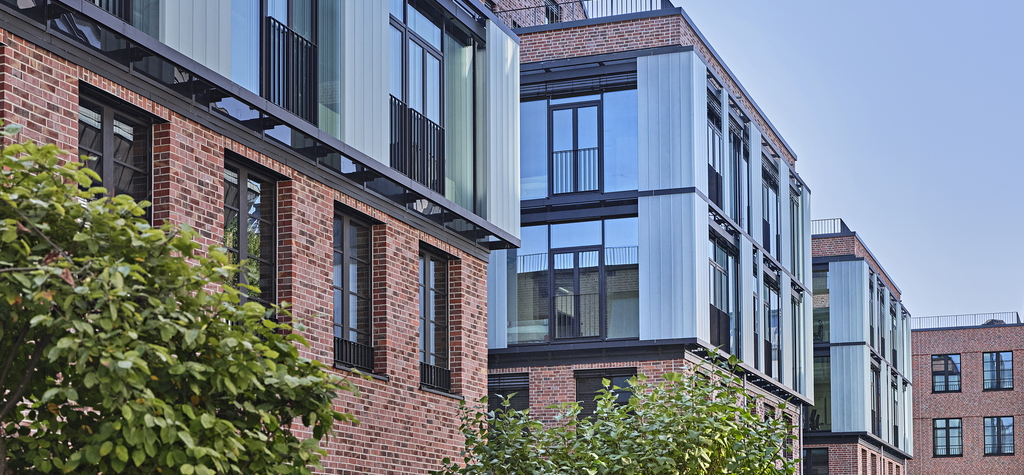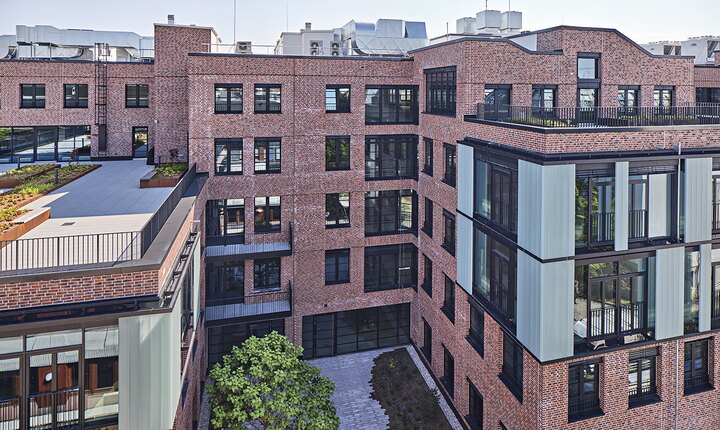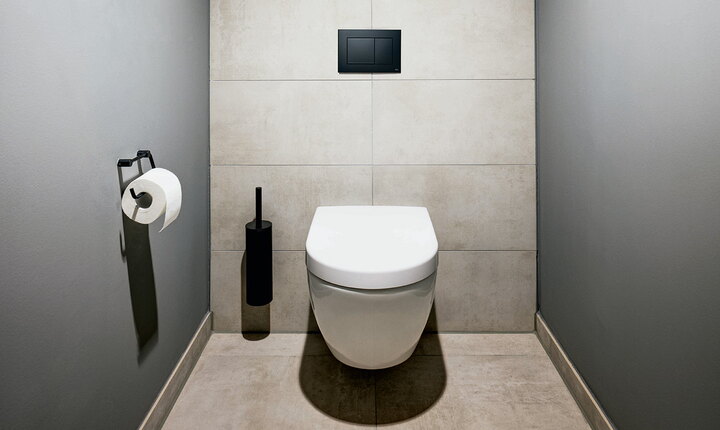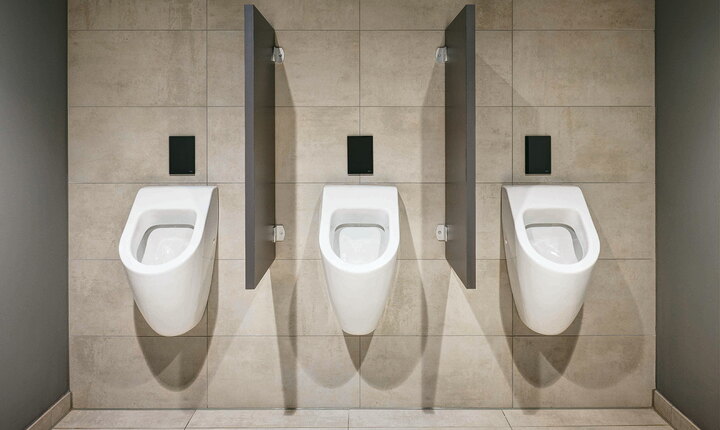
Between Industrial History and the Information Society
Shimmering red brick and large-format windows in black steel frames evoke associations with historic industrial architecture, while panels of floor-to-ceiling profiled glass speak of digital working environments. Inside the "New Eastside Munich," exposed concrete and blackened steel create an atmosphere more reminiscent of studios than an office building: The materials demonstrate that the new building, completed by Oliv Architects in the east of Munich, draws its identity from contrasts. The new building replaces an old hydraulics factory. The fact that it has already received the world-renowned LEED (Leadership in Energy and Environmental Design) Gold certification underscores its high level of sustainability.
Modular structure for modern work
The building is based on an open double comb structure. By modifying the northern end of the building and staggering the height of individual building segments, the 130-meter-long volume fits perfectly into its urban surroundings.
The almost 15-meter-deep building segments allow for large-scale work areas. Three cores with elevators and stairwells are arranged in the connectors between the office segments and, together with two more at the ends of the building, form the vertical access. This creates a modular structure of maximum flexibility.


Nine restroom cores are assigned to the smallest possible units. Prefabricated and fully piped sanitary walls and shafts are used, which fully exploit their advantages in terms of planning and assembly reliability, precision, and quality. The size and complexity of the building necessitated the early planning of prefabricated system walls. After deciding on the TECEsystem, the modules were incorporated into the design planning and also considered in the detailed planning.
A considerable simplification resulted from the fact that the sanitary registers were delivered to the construction site just in time and lifted into place floor by floor using unloading aids. Only then were the ceilings above them closed. The time savings from this measure alone were enormous, because the modules did not have to be subsequently and individually carried across the entire construction site.
Only two workers were needed on site to align the sanitary walls and shafts, secure them to the building structure, and connect the pipes. TECE components also demonstrated their flexibility given the sometimes very high ceilings. For example, the over 3.50 meter high installation walls on the ground floor were realized as freestanding.
Prefabrication and system construction simplify construction
Well-thought-out functionality and high manufacturing quality are also characteristic of the components visible in the finished bathroom. The TECEnow line was chosen for all toilet flush plates due to its renowned reliability, defined pressure points, and, last but not least, its timeless design with high-quality surfaces and precise edges. TECEfilo flush plates in black glass and integrated urinal electronics complete the elegant look.

